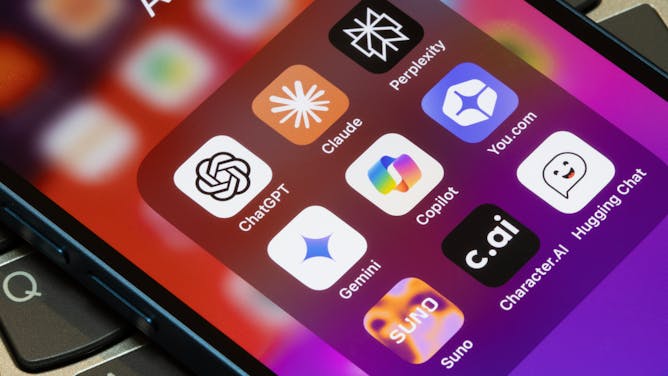|
Whispers about overheating in the artificial intelligence sector have been growing louder in the past month, with the Bank of England and International Monetary Fund alike raising concerns that the AI boom may not be built on solid ground. The ingredients for a bubble certainly seem to be there. Artificial intelligence behemoth OpenAI, for example, is now valued at more than US$500 billion – up from $157 billion this time last year. And all this without ever having turned a profit.
This rapid surge in valuation is a sign that investors are banking on big profits from AI – one day. Fears that these expectations may not be met could leave investors deciding they want out. As Richard Whittle of the University of Salford and Stuart Mills of the University of Leeds explain, the only surefire way to know if it’s a bubble is to see if it bursts.
Whittle and Mills nod to the dot-com bubble of the late 1990s, but there’s another example with startling parallels. A century ago, the hottest tech investment was electricity – like AI, it was transforming life as people knew it. But those stocks saw a bust of their own. As Cameron Shackell of Queensland University of Technology notes, when it comes to tech-driven market booms, history offers lessons for those who care to look.
|

|
Sarah Reid
Senior Business Editor
The Conversation U.K.
|
|

Richard Whittle, University of Salford; Stuart Mills, University of Leeds
The value of many tech firms has soared – but some observers are now worried.
|
|
|
|
|
Work
|
-
Richard Gater, Cardiff University
Automation threatens manual jobs. But what does that mean for working-class young men. And how can policy stop them from being left behind?
|
|
Supply chain
|
-
James Boafo, Murdoch University; Rochelle Spencer, Murdoch University; Senyo Dotsey, Università di Torino
The competition for Africa’s critical minerals between China and the West presents an opportunity.
|
|
Trade
|
-
Arno J. van Niekerk, University of the Free State
There has been a rebalancing of global trade dynamics with wide-ranging consequences for international business.
|
|
Real estate
|
-
Soon Hyeok Choi, Rochester Institute of Technology
In hot housing markets, buyers who outbid rivals often overpay – and face higher risks of loss and foreclosure.
|
|
Technology
|
-
Joseph Mellors, University of Westminster
Ask better questions, find better places.
-
Gordon A. Gow, University of Alberta; Brian Fauteux, University of Alberta
Disclosing AI use on music platforms shouldn’t give streaming platforms a free pass to flood catalogues with AI content. Listeners deserve clear and transparent labelling.
|
|
Economy
|
-
Joanne Hsu, University of Michigan
Consumer sentiment remained flat in October, compared to the previous month. But history shows a prolonged federal shutdown can impact how people feel about the economy.
|
|
Transportation
|
-
Frédéric Dimanche, Toronto Metropolitan University; Kelley A. McClinchey, Wilfrid Laurier University
How the U.S. government shutdown could ripple across tourism and travel.
|
|
Inequality
|
-
Carl Rhodes, University of Technology Sydney
Former prime minister Bob Hawke regretted saying: ‘By 1990, no Australian child will be living in poverty’. But his broken promise still had a surprising impact.
|
|
|
|
More from The Conversation |
|---|
| |
|
| |
| |
| |
| |
|
|